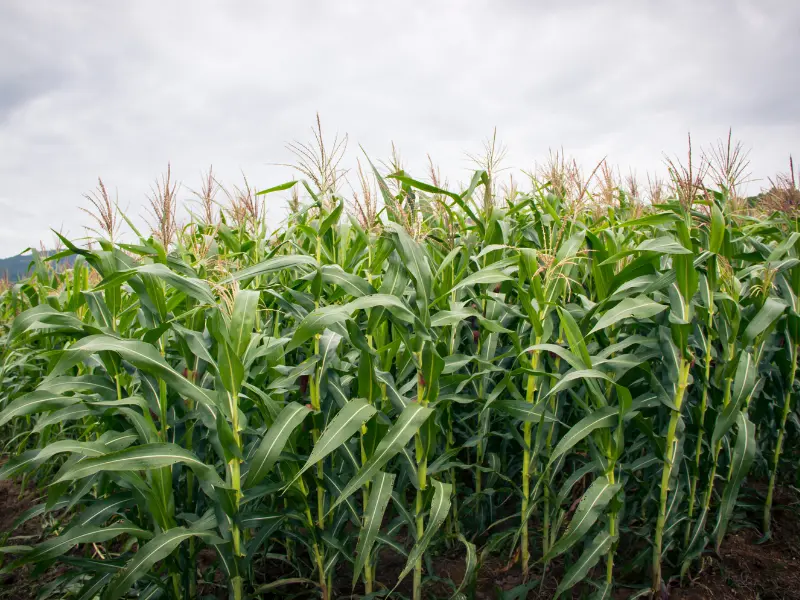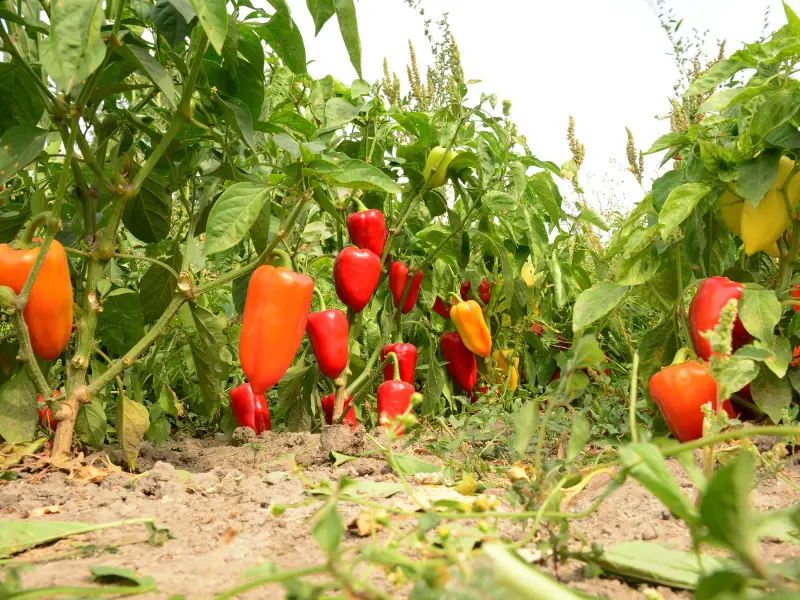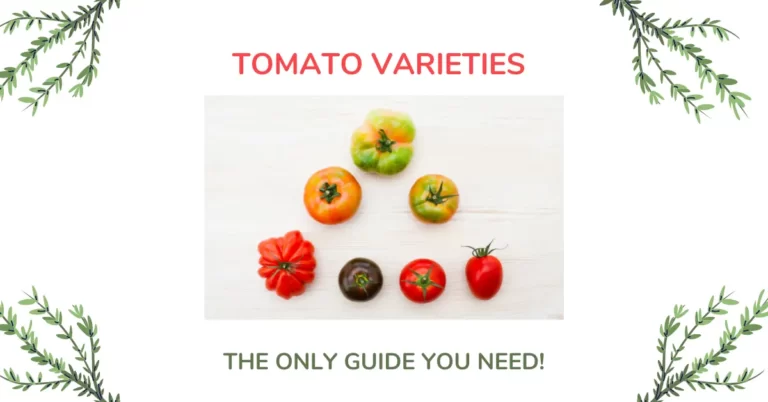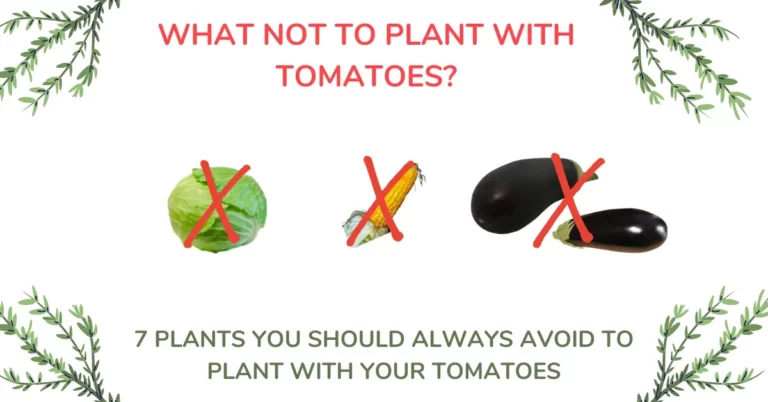If you’re looking to keep pests away from your tomato plants, you should consider planting some of the best tomato companion plants. With a little planning, you can create a garden that is both beautiful and productive.

But first things first, for those who haven’t even heard what that is, let’s quickly clarify that.
What is Companion Planting
The term “companion planting” or “companion plant” refers to the intentional planting of different species of plants in close proximity to each other in order to reap the benefits of their symbiotic relationship.
The plants that are grown in close proximity to each other are often plants with which the grower hopes to achieve a specific effect. For example, one plant may be used as a physical barrier between another plant and an unwanted intruder such as insects or animals.
Companion planting is practiced in both commercial agriculture and domestic gardens.
The Benefits Of Companion Planting for Tomatoes
When it comes to tomato companion planting, there are a few key benefits that make this gardening method worth mentioning.
- Companion planting can help to improve the overall health of your tomato plants by providing them with additional nutrients and protecting them from pests.
- Companion planting can also help to increase the yield of your tomato plants by providing them with more space to grow.
- Companion planting can also help to improve the flavor of your tomatoes by allowing them to interact with other plants in their environment.
- Companion planting can help to deter the growth of unwanted plants around your tomato plants.
If you grow tomatoes (or plant to start growing them), you might be wondering what plants make good companions for them. Tomatoes do best with companion plants that improve drainage and aeration around the roots, deter pests and diseases, and provide support for the vine. But let’s dig into more specific plants that you can and should use for companion plants.
Top 10 Tomato Companion Plants
If you want to grow tomatoes in your garden, you need to know about the best and worst companion plants for tomatoes. Here are the top 10 best tomato companion plants:
1. Rosemary
The benefits of Rosemary planned with or near tomatoes are numerous. For one, Rosemary has been shown to improve the flavor of tomatoes when they are grown together.
Additionally, the two plants can help to protect each other from pests and diseases.

2. Garlic
When garlic and tomatoes are planted together, they can help to repel pests and improve the overall health of the plants. The two crops also benefit from each other in terms of pollination and nutrient uptake.
Also, garlic can help to deter fungal diseases that can affect tomatoes.

3. Marigolds
Marigolds release a chemical that repels nematodes, a type of parasitic worm that can damage tomato roots.
These cheerful flowers not only add a splash of color to your garden, but also help deter pests like nematodes, whiteflies, and rabbits.

4. Nasturtiums
The nasturtium is a flowering plant in the genus Tropaeolum, native to South America. The plants are annuals or short-lived perennials, growing to 0.5-2 m tall. The leaves are variable in shape, typically 3-lobed with a rounded to heart-shaped base, 5–15 cm long, and 3–12 cm broad.

When nasturtiums are planted with or near tomatoes, they can serve as a trap crop for aphids and other pests. The strong fragrance of the nasturtiums will also help to repel pests. Additionally, the nasturtiums will help to increase the overall yield of the tomato crop by providing essential nutrients and shade.
5. Dill
There are a few reasons why you should plant dill and tomatoes together. For one, dill provides a good source of nectar for bees and other beneficial insects, which in turn help to pollinate the tomatoes.

Additionally, dill repels certain pests that might otherwise feast on your tomato plants, such as aphids and spider mites. And finally, the two plants simply complement each other aesthetically.
6. Sage
Another fantastic option for a tomato companion plant is sage. Sage is a woody herb that can help support the growth of tomatoes. The sage plant has a strong scent that can help repel pests and diseases that might otherwise harm the tomato plants.

Another benefit is that the two plants have similar water needs, so they can be easily managed together.
7. Thyme
Thyme is an aromatic herb that releases a strong scent when its leaves are disturbed. This scent confuses and repels many types of insects, including those that attack tomatoes. In addition to acting as a pest deterrent, thyme also improves the flavor of tomatoes when used as a companion plant.

When choosing a thyme plant for your garden, look for one that is labeled as being resistant to both deer and rabbits.
8. Oregano
Oregano is a great companion plant for tomatoes because it helps to deter harmful insects and pests, and it also improves the flavor of tomatoes.

When oregano is planted near tomatoes, it helps to keep away harmful insects such as aphids, whiteflies, and spider mites. Moreover, oregano helps to improve the flavor of tomatoes by adding a slight sweetness to them.
9. Parsley
One may plant tomatoes and parsley together, as both plants require full sun and well-drained soil. Furthermore, both plants benefit from being planted in raised beds or hills.
However, it is important to note that parsley is a biennial, meaning it will take two years for the plant to complete its life cycle. Thus, one should only plant parsley every other year, or in a different location each year so that the plant does not deplete the soil of nutrients.

10. Chives
Tomato plants and chives make a great combination – they’re both easy to grow and don’t require a lot of upkeep; they complement each other well flavor-wise and the sweetness of the tomatoes offsets the sharpness of the chives, making for a delicious combination.

11. Borage
This pretty blue flower is not only a great addition to your salad or cocktail, but it also helps attract bees which can help pollinate your tomatoes.

12. Basil
Basil is a great option for a tomato compaction plant. It helps repel pests, and it also has great flavor for your tomatoes.

Worst Tomato Companion Plants
On the other hand, there are some plants that should not be planted with tomatoes. Here is a list of plants that have the potential to ruin your tomato crops if planted together.
1. Cabbage
Tomatoes and cabbage are two very popular vegetables to grow in every garden. However, these two plants should not be planted together. Here is why:
Tomatoes and cabbage are both susceptible to the same pests and diseases. For example, both plants can be affected by root-knot nematodes. Planting them together will only increase the chances of your plants becoming infected.

Cabbage is a heavy feeder and will compete with tomatoes for nutrients in the soil. This can lead to stunted growth and reduced yields for both crops.
Tomatoes produce a lot of ethylene gas as they ripen. This gas can speed up the maturity of cabbage heads, causing them to bolt (go to seed). As a result, you may end up with small, bitter-tasting cabbage heads.
2. Corn
Another incompatible companion for tomatoes is corn. There are a few reasons for this:
First, tomatoes and corn are both heavy feeders. They need a lot of nutrients to produce a good crop. If you plant them together, they will compete for those nutrients and neither one will do as well as they would if they were planted alone.

Second, tomatoes and corn are both tall plants. The corn will shade the tomatoes and prevent them from getting the sunlight they need to produce fruit.
Finally, tomatoes and corn have different water needs.
3. Eggplant
Eggplant is another big “No!” as a companion plant for tomatoes. Just like cabbage, eggplants and tomatoes are susceptible to similar pests and diseases. They can also cross-pollinate, which can lead to hybrid offspring that are less vigorous than either parent plant.

4. Peppers
Peppers and tomatoes have different nutrient requirements. Tomatoes require more nitrogen, while peppers require more phosphorus.

Peppers and tomatoes mature at different rates, with peppers generally maturing faster than tomatoes. This can result in uneven ripening and poor yields. Both plants tend to suffer from the same pests and problems.
5. Potatoes
Tomatoes and potatoes share too many similar problems and pests to be a good combination. For example – the colorado battle loves to munch on both plants.

They have different maturity dates, so one will always be ready to harvest before the other.
6. Celery
Plant celery away from tomatoes. The main reason is that as this can cause “blossom end rot” on the tomatoes. But there are other reasons. Celery and tomatoes both need lots of water and can be affected by the same diseases in the same way.

Bottom line
When it comes to planting tomatoes, not all plants are created equal. Some plants can actually hinder the growth of your tomatoes, while others can help them thrive. Here’s a list of what not to plan with tomatoes.
So when you’re planning your vegetable garden this year, be sure to choose your companions wisely! It will make or break your crops.








